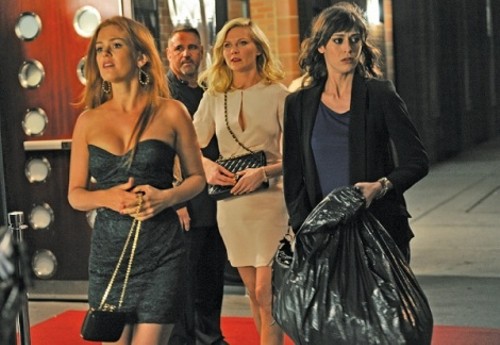It has taken 15 years of attending, but I think I’m finally able to acknowledge a difficult truth: I don’t really know what makes any given Sundance Film Festival a “good” festival.
Perhaps an even more accurate way of expressing that same sentiment is recognizing that there are too many different ways of evaluating the quality of an entire Sundance for any single definition to make sense. Maybe it’s an 11-day stretch where, on balance, you see many more films you genuinely enjoy than those that simply eat away precious 90-minute chunks of your time. Maybe a “good” festival is one where you find something fresh and remarkable—a story, a filmmaker, a performance that you can champion and talk about—and hope is a portent of a great career to come. Or maybe it’s simply one where you avoid logistical nightmares like missed shuttles, or where you get only one day of brutal weather like the Saturday blizzard (which again makes you wonder why Park City in January is a reasonable place to invite 40,000 people who are actually worse drivers in snow than native Utahns).
Evaluation is made even more difficult by a phenomenon akin to the old story about the blind men and the elephant: The way you think about the festival has a lot to do with which parts of it you manage to get your arms around. No individual can do more than sample from the 100-plus features and eight shorts programs, always leaving the distinct possibility that you missed out on the one thing that might shift your overall perspective. Vagaries of scheduling kept me from seeing the Grand Jury Prize winners in both the U.S. Dramatic competition (the surreal fantasy Beasts of the Southern Wild) and the U.S. Documentary competition (the “war on drugs” critique The House I Live In). Try to offer a grand pronouncement about Sundance 2012 without having seen two of its most highly regarded films, and you look like a bit of a fool.
That doesn’t stop some journalists from trying to reduce the festival lineup to “trends”—even when those assessments didn’t make a lot of chronological sense. There was plenty of talk about the “raunchy girl” comedies at Sundance 2012, from the often inspired gal-pal craziness of For a Good Time, Call …, about New York City roommates who start a phone-sex business, to the more scattershot crudeness of the Kirsten Dunst-led ensemble Bachelorette, to the appallingly sloppy faux-Sex and the City nonsense in That’s What She Said. It was all attributable to the success of Bridesmaids, of course—except that the movie business doesn’t really work in a way that allows copycats to appear seven months later.
The best and most honest avenue available, then, is simply to embrace the great stuff one was able to discover—and at Sundance, the best stuff is often in the documentary categories. Lauren Greenfield’s The Queen of Versailles offered a fascinating glimpse at the collapsing economy through the eyes of “the 1 percent,” showing how even a billionaire and his family felt the seismic shift on a different scale. Lisanne Pajot and James Swirsky gave us Indie Game: The Movie, which offered a new perspective on the heroic battle to create something personal and singular through an art form—designing independent video games—that might not typically leap to mind. And Rodney Ascher took a hilarious look at the process of interpreting art in Room 237, his compendium of the wild theories that have sprung up around Stanley Kubrick’s The Shining.
Even among the narrative films, some of the strongest work came from blurring the line between real life and fiction. As director, co-writer and star, comedian Mike Birbiglia adapted his autobiographical one-man show Sleepwalk With Me into a wonderfully satisfying romantic comedy, spiked with his casually self-deprecating sense of humor. The divisive Compliance told a real-life story of unquestioning obedience to authority in a way that got audiences shouting and arguing. Meanwhile, actor Mark Webber created an intensely personal, largely improvised drama in The End of Love by casting himself as a widowed struggling actor, and his own impossibly adorable 2-year-old son, Isaac, as his character’s son.
But mostly, I’ll probably remember Sundance 2012 leaving me with lots of laughs: Sleepwalk With Me; John Dies at the End; The First Time; Save the Date; For a Good Time, Call …; Room 237; Robot & Frank and The Surrogate were about as different as movies can be, yet left audiences delighted and smiling. Yes, it was a very funny year in Park City—but maybe that’s just the part of the elephant that I ended up grabbing.
More by Scott Renshaw
-
Film Reviews: New Releases for April 19
The Ministry of Ungentlemanly Warfare, Abigail, The Beast, Hard Miles, Sasquatch Sunset and more
- Apr 19, 2024
-
Faces of Salt Lake County book and portrait reception
Images and personal stories in a new book reveal local demographic diversity
- Apr 17, 2024
-
Feature film review: THE BEAST
A filmmaker's compelling ideas get a bit tangled in references to his creative influences.
- Apr 17, 2024
- More »




